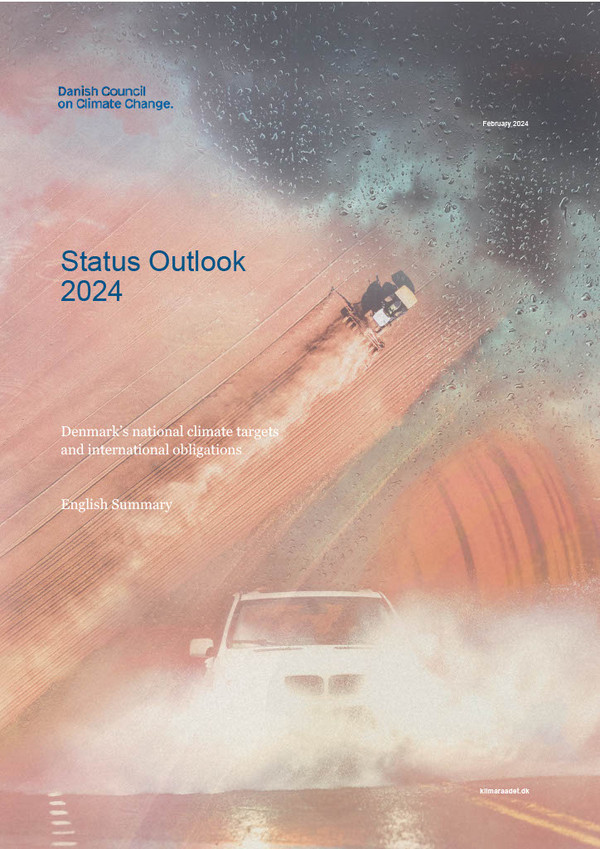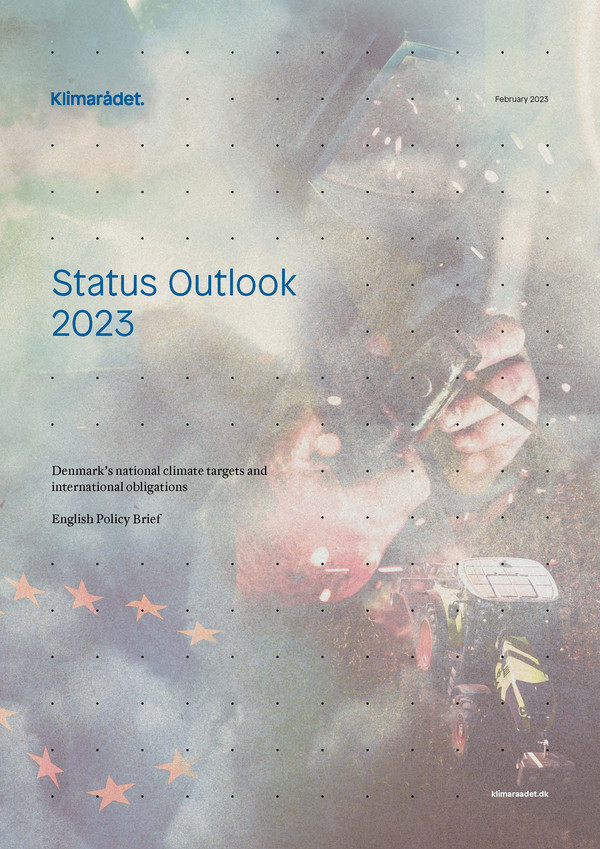
Charges which transform

Foreword
In the Report “Charges which transform – a proposal for climate-friendly tax restructuring” the Danish Council on Climate Change looked closely at some of the most acute problems in the current tax system, problems which could potentially make the green transition more expensive than it needs to be or even cause increased emissions of greenhouse gases. The report deals with, among other things, issues such as a tax system which promotes the use of biomass at the expense of heat pumps and levies that inhibit the spread of electric cars which could help to replace fossil fuels in the transport sector as long as they were operated by electricity from renewable sources.
With Denmark shortly having to work out how to meet the obligations of the EU's 2030 climate change goals, we have also chosen in this report to look at the expected content of the European Commission's climate and energy package and examine Denmark’s advantageous position in the forthcoming negotiations on rules for meeting the EU's 2030 targets in those sectors of the economy not covered by the EU’s Emissions Trading System.
Introduction
The Danish Council on Climate Change regularly prepares recommendations for Danish climate policy, including the choice of measures and conversion paths necessary to realise the climate law's objectives. In “Charges which transform – a proposal for climate-friendly tax restructuring”, we look more closely at some of the taxes that should be adjusted soonest. This chapter summarizes the report’s main conclusions and recommendations.
Denmark is facing a comprehensive transition to a society with very low greenhouse gas emissions.
This means that some climate policy choices must be taken which will have both long- and short-term impacts. Some of these choices are crucial to the overall conversion, while others serve to minimise society's total expenses for the transition.
In this report, we focus primarily on the imbalances in the tax system in the transport and heating sectors because the charges in these two areas are impeding a cost-effective green transition. Passenger transport must be converted from cars powered by fossil fuels to zero-emission cars and the heating sector must be based more on electricity from renewable sources. In these two areas policy efforts can be targeted to help create a better tax structure that can support the electrification of society and ensure socioeconomic savings on the way to achieving the long-term goals in 2050.
In this report the Danish Council on Climate Change also investigates Denmark's compliance with the current climate targets and the framework of the forthcoming setting of goals for 2030 by the EU. Denmark's contribution to the 2030 target is expected to be a big task and it will probably require significant greenhouse gas reductions, in particular in the agricultural and transport sectors. The Danish Council on Climate Change elucidates in the context of how Denmark should proceed in the future EU negotiations in respect of the details of the 2030 goals. Denmark has already reduced a portion in the ETS sector, but with the upcoming 2030 targets the country will also face a significant transition in the non-ETS sector. We are therefore entering a new and more challenging phase of the green transition.
Denmark's climate objectives
Denmark will probably realise an overall reduction of 40 percent by 2020 – but the emissions in non-ETS sectors have increased in comparison with previous assessments.
The latest energy and climate projections show that Denmark will fulfil all of its international obligations by 2020 as well as the national reduction target of 40 percent in 2020 relative to 1990 levels as agreed to by a parliamentary majority in 2014.
Under the projection from 2014, a reduction of approximately 37 percent was anticipated. The change between the two projections is primarily due to emissions in the ETS sector falling, in part driven by the increased use of biomass in heat production. While a fall in emissions is in itself a positive thing, there is some concern that it is partly due to a bias in the tax system where biomass is favoured over, for example, heat pumps, which are the economically cheapest solution for heating. The new assessment is based on previous PSO funding and the projected expansion of renewable energy, and any amendments to this may therefore alter the outcome.
The rules governing the achievement of targets for the non-ETS sector by 2030 will be key
For the non-ETS sector, Denmark will probably have a target under the EU on reducing greenhouse gas emissions of close to 40 percent by 2030 relative to 2005 levels. It will be a big task to achieve this reduction target - a task that cannot be accomplished without significant reductions in agriculture and transport. When the European Commission has presented its proposal this summer of the rules for fulfilling the 2030 commitment, the EU member states shall negotiate further on the final rules. Of particular importance here is how the rules for the use of flexible mechanisms for goal achievement and management of land use and forestry (LULUCF) end up being designed.
Denmark should remember to plan for the future in the forthcoming negotiations on the EU's 2030 target
In the upcoming negotiations with the rest of the EU on the rules for the achievement of the 2030 target, it is important to take into account the long-term goals as laid out by the Climate Act which aim to see Denmark become independent of fossil fuels by 2050. Therefore, it is in Denmark's best interests to work towards rules for achieving the 2030 target which support the most cost-effective way to 2050 rather than merely focusing on what is cheapest in the period between now and 2030. At the same time, as Denmark works within the EU framework, it is also relevant to consider how the rules for achieving these goals will affect the overall climate impact of the EU in the period leading up to 2030.
The EU’s 2030 target is a step towards the fulfilment of the long-term EU reduction target of 80-95 percent by 2050. It may therefore be counterproductive if the selected rules on how to achieve these goals end up mandating an actual reduction of greenhouse gas emissions to the atmosphere by 2030 which is less than the agreed 40 percent across the EU. In that case, it may be difficult to achieve the 2050 target.
Once the Commission has presented a framework for the individual countries' targets, future Danish Climate Council studies will look closer at how Denmark can best meet the 2030 target.
The role of taxation in the green transition
Taxes are one of the most important tools in the green transition
If taxes are properly designed, they can encourage businesses and consumers to choose economically sensible solutions based on renewable energy.
Taxes on energy and cars today generate about 68 billion kr. a year for the treasury, but as Denmark shifts to renewable energy, there may be a fear that this income will fall. The Danish Climate Council's analysis shows that this decline will not necessarily be very great. The annual revenue from energy and environmental taxes, where car taxes are excluded, is estimated to only decline by about 2.5 billion kr. in 2050 compared to today if current rates are maintained. This is because the green transition leads to an increased use of electricity, which is subject to energy taxation.
Charges must take harmful effects into account
Ideally charges should reflect only the so-called externalities which represent the cost of damages from such things as traffic noise or pollution, which includes greenhouse gas emissions. This repositions a product's price to reflect the true socioeconomic cost of production or consumption. If there are political or practical constraints on the possibilities of using other sources of revenue, there may also be a political desire to recover some revenue via the tax system. Finally, there may be policy objectives for energy and climate policy that go beyond what is socio-economically optimal, which means that taxes can play an even greater role.
Clear policy objectives and forethought are the basis for optimal charges. If the politicians do not have a clear idea of what might be accomplished with taxes, there is no possibility of designing an appropriate tax system.
Electric cars and taxes
Transportation is facing a major challenge in the run up to 2030
Transport is part of the Danish non-ETS sector, which altogether is expected to have a target for a reduction in emissions of close to 40 percent in 2030 compared to 2005. If the area of so-called “passenger transport” must also reduce its emissions by 40 percent, this will likely require close to 1 million electric vehicles or other zero-emission cars in 2030, representing more than 30 percent of the vehicle fleet.
The electric car is currently undergoing rapid technological development
Already in a few years the total costs of ownership for many electric vehicles are expected to be lower than for a comparable petrol-powered car. Both the electric car's limited range and the current tax system for cars brakes, however, have inhibited the spread of electric cars, and the Danish Climate Council’s guess is that Denmark, under the current tax system, will only have between 200,000 and 300,000 electric cars by 2030. The Danish Climate Council’s analysis therefore indicates that under current initiatives and charges Denmark cannot transform the “passenger transport” sector in time to achieve the Danish part of EU’s 2030-target.
The tax system creates barriers to the spread of electric vehicles
Electric cars fared disproportionately poorly under the tax system when they were phased into the vehicle registration tax in 2016. It is unreasonable that the cost of the battery be levied through the vehicle registration tax as a premium as the battery does not reflect an increased consumption value of the electric car compared to a comparable petrol or diesel car in the same class. The cost of the battery should rather be seen as an investment that is needed to achieve the high-energy efficiency and consequent lower running costs that characterise the electric car. It is also inappropriate that electric cars in the micro category do not receive a full rebate for their high energy-efficiency due to minimum fee commanded by the vehicle registration tax.
Transition of heating
Heat pumps are a cheaper socioeconomic source of heat than biomass
In 2014, individual heating and district heating production resulted in the release of about 5 million tonnes of CO2. With the current regulations this emissions figure is estimated to be reduced to less than 2 million tonnes in 2030. This assumes that the biomass used for heating is fully CO2-neutral. The heating sector is therefore well on track to be fossil fuel independent by 2030.
Heat pumps based on 100 percent green energy are a socioeconomically cheaper heat source than biomass, but tax rates make biomass cheaper for private economies. Reducing the tax on electricity for heating by 29 øre per kWh could achieve a social gain of almost 1 billion kr. and CO2 emissions would be reduced slightly. Households and businesses can save around 1.3 billion kr. on heating bills, although through their electricity bill they would pay around 0.1 billion kr. extra to support renewable energies in order to ensure that the extra electricity consumption for heat pumps is 100 percent green. The Treasury would lose about 0.2 billion kr. in charges in 2030.
Moving the financing of the PSO-funding from the electricity bill to the Finance Act will realise part of the gain, which would be achieved by lowering the tax on electricity, however there is still an additional benefit to be attained through a small reduction of electric heating charge of approximately 10 øre per kWh.



